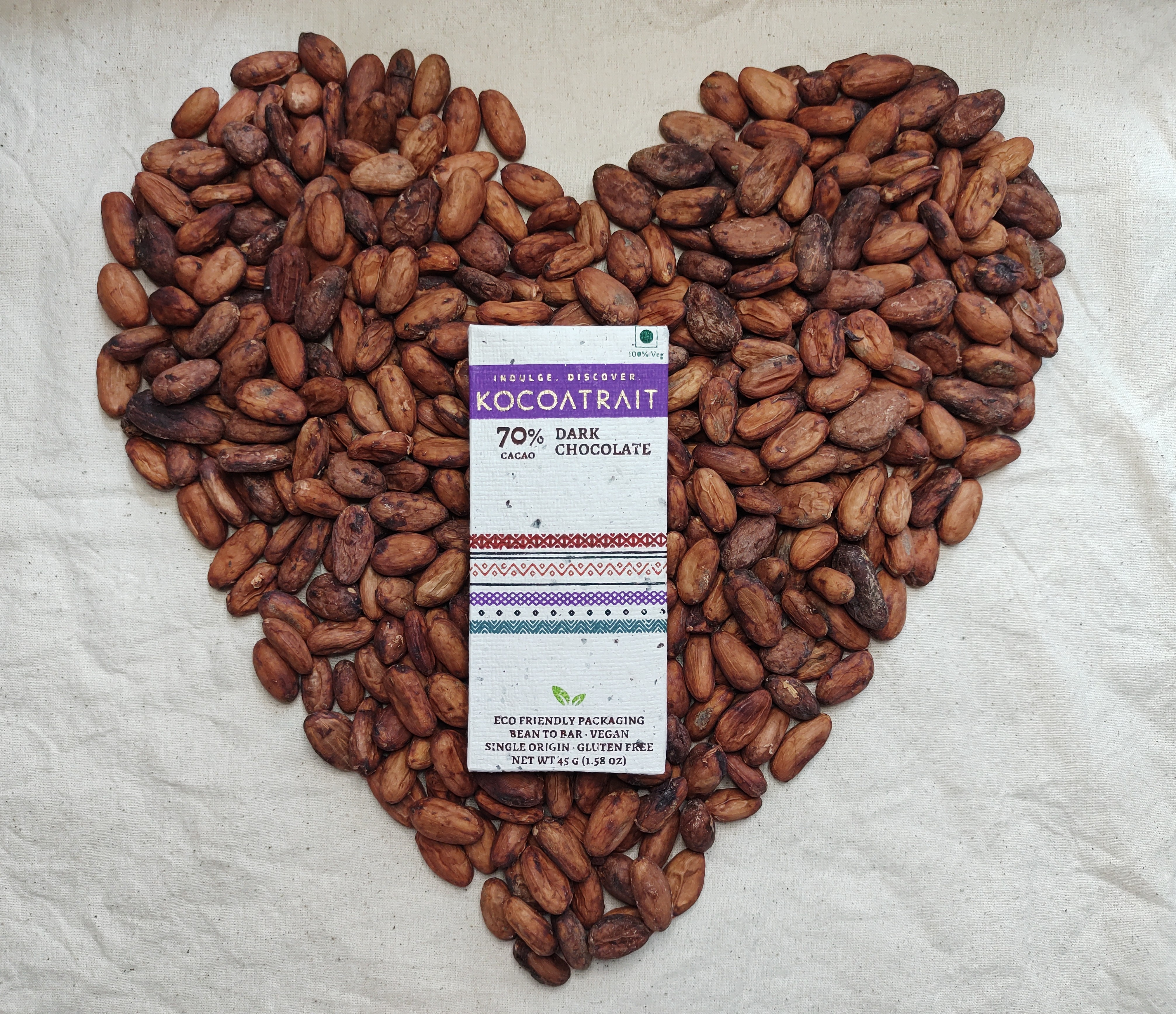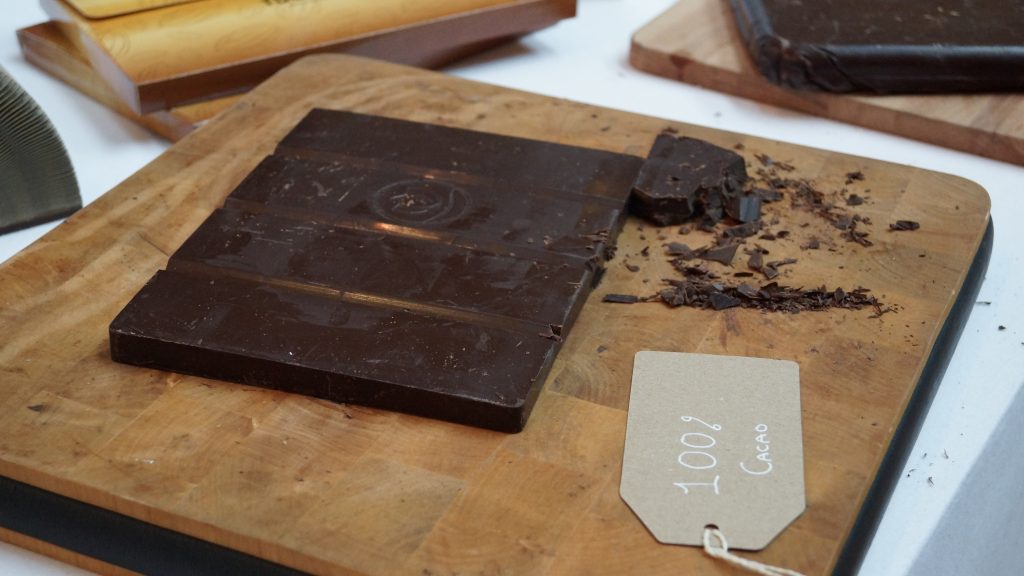Kocoatrait, the world’s 1st planet/eco friendly, socially concious and sustainable luxury bean to bar chocolate, was launched at Chocoa in Amsterdam in 2019. Whats unique about Kocoatrait is that we operate in the Circular Economy (link). By November 2019, Kocoatrait launched in chennai and had started to think about expanding beyond current retail and online platforms. Zero waste gift was one idea that did occur to us early on. The attempt was to reach the more exposed, evolved and travelled audiences. Just then, we received a call from one of chennai’s oldest technology centric advertisement solution providers. The client had received communication from us as part of our outreach program. They were evaluating innovative gifting options their business partners and reached out to us. We were excited to present the Kocoatrait story to them.
We visited their team in the next few days. They patiently heard us narrate the Kocoatrait story! It was a memorable short meeting taking precisely 4 minutes to almost close the deal. I can talk hours about our story at one go usually! Half way through the conversation, I felt very confident while speaking to the audience. They saw us as a right fit into their requirements. It felt that I was presenting the right solution to the right audience. This is ever marketers dream and we somehow got there!). I already started feeling we had marketed our product well and did not have to sell it. Anyone interested to read more on the difference between marketing and sales can click here!
It was the 5th minute of the conversation and we were already tasting the chocolates! I went on to explain how this whole gift Box would be Zero Waste. At the end of 10th minute we were discussing how many boxes can be shipped out to their select business partners across India! This was one of the rare meetings where we were asked what we could do for a specific price/budget, we worked backwards and the deal closed on my 1st offer. For anyone who does not know about Kocoatrait chocolates yet, here is the link to the Presser for your perusal: Click on this Link.

The box contained 6 Kocoatrait chocolate bars of various exotic flavours. While the chocolate was Zero waste, we had to also ensure that the outer packaging was Zero waste too! We used a TIN box, on which we got the clients branding screen printed using water based inks. The printing was done on our own up-cycled chocolate wrapping material. Vexcel Educational Trust, are our printing partners. Vexcel was super efficient and delivered in no time! In the inner side the lid of the TIN box, we had a Professional chocolate tasing guide pasted. We also had a QR code to access the webpage of our other chocolate flavours. Another QR code helps users understand how to reuse the aluminium foil which is used to wrap our chocolates.


The client was impressed and convinced by the Zero waste gift box concept. I realised it when I saw an entire and most important side of the insert being used to narrate our story! They could impress their business partners by demonstrating their support to local businesses who are planet friendly and sustainable. What better way to say “Thank You”! I realised this when i read the content to be printed on the other side of the insert. They were kind enough to share our story along with our contact details.


The TIN box with the chocolates was fit into a reusable cardboard box which accommodated 2 reusable ice gel packs. This box was then taped and we used a sheet of paper to print the bluedart shipping label. We have been working with bluedart since to see how we can eliminate paper but that does not seem as an option as of now. The only regret we had that it had to be taped using plastic tapes. We have since then, found a solution to the tapes. We will start using bio degradable cling wraps from our next orders to make the box tamper proof during transit.

In the next 2 weeks, we collaborated out IT effort with our shipping partners Bluedart to generate shipping labels. The shipments were all out for overnight delivery within the next few days! The learning while integrating with Bluedart IT was about our inability to be agile rather than theirs! While the despatches had some delays (keeping shipping to the 1st half of the week), we tracked the packages closely.
Upon delivery we started receiving feedback calls from both the client and their recipients. They were pleased with the in-depth thought that had gone into making the gift box a Zero waste affair. We felt that our conviction of offering a Zero waste chocolate gift box was not early in time and was validated. A market opportunity exists and clients can quite easily be converted into gifting a Zero Waste experience. As Winston S. Churchill once said, “Success is not final, failure is not fatal: it is the courage to continue that counts.”. Kocoatrait – Indulge. Discover.
PS: My dad is my daily dose of inspiration. He asks me everyday, “What new have you done today?” (almost expecting me to come up with an actionable idea everyday! – Parents know how to push when needed). Forcing me to constantly think out of the box for solutions to everyday problems. He firmly believes what goes around comes around. He has a single minded & undivided attention and focus towards innovation and new ideas even in his field of work.
I am writing this during the lockdown and am forced to think that this pandemic must have a positive impact on humankind. It is heartening to see pictures of animals enjoying their time in nature while humans stay inside the concrete jungle. I hope that, going forward, humans are more compassionate towards the planet and mother earth. We are happy that we have willingly and proactively put in our efforts towards becoming planet friendly rather than being reactive to a situation. Connect with us now! nitin@cocoatrait.com; +919600064846




